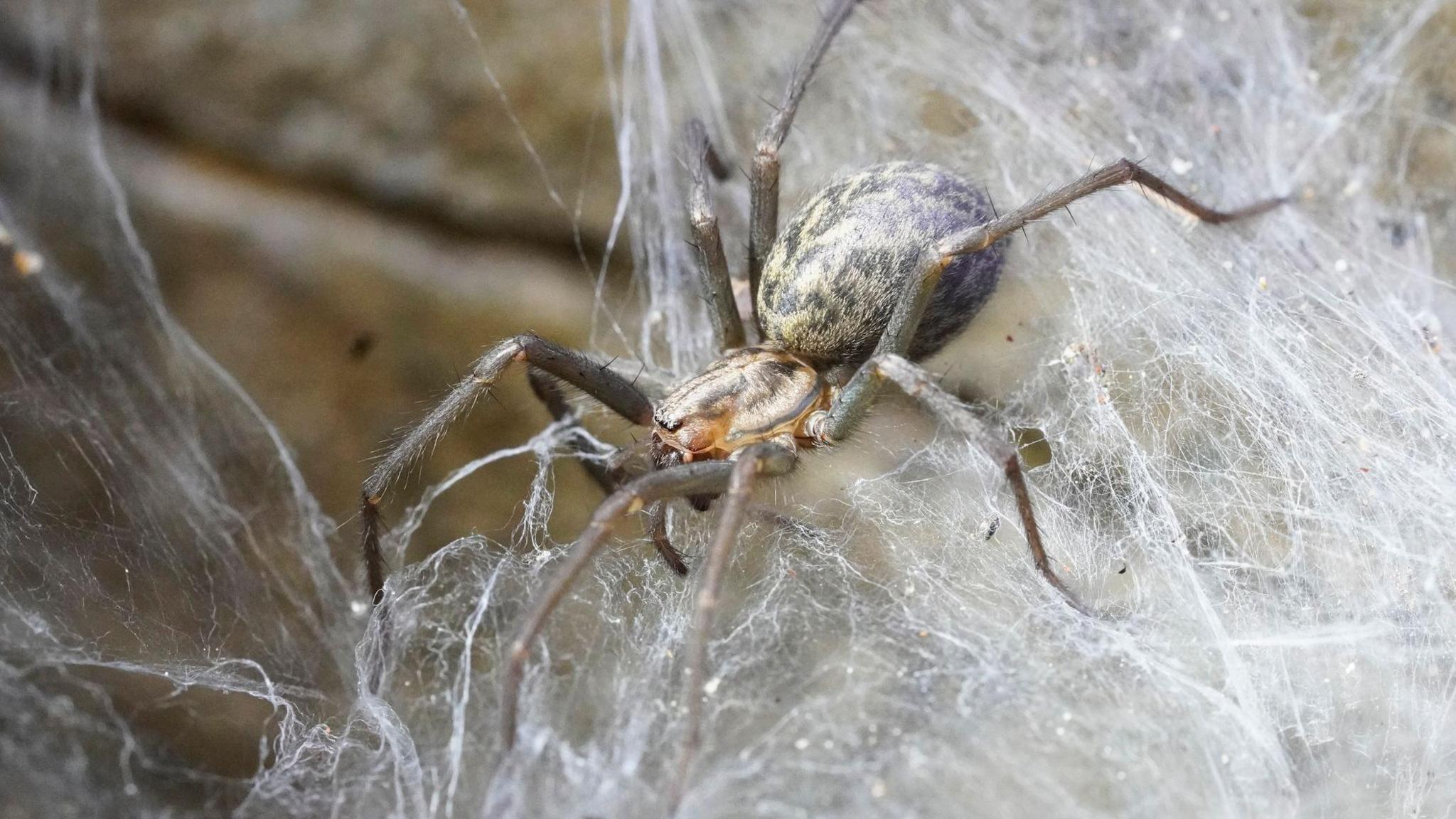World's biggest spider's web discovered in cave

The vast spider's web on the wall of the cave
- Published
Scientists have discovered 100,000 spiders living in what could be the biggest spider's web in the world.
The community is made up of two species of spider which scientists previously didn't think would work together.
The web stretches 106 square meters across the cave.
The colony is made up of around 69,000 domestic house spiders, also known as the barn funnel weaver or Tegenaria domestica, and 42,000 Prinerigone vagans, a species of sheet weaver spider.
Scientists solve mystery behind dancing spiders
- Published11 September
Wolf spider feared to be extinct, found on Isle of Wight
- Published30 October
The spider megacity was first found in 2022 by cavers who reported the find to scientists.
It was found in a network of limestone caves which have an entrance in Greece but cross over into the neighbouring country of Albania.
The sulphur caves have been formed by sulphuric acid when hydrogen sulphide a gas which smells of egg from groundwater reacted with oxygen.
Spiders are usually quite solitary creatures so communal webs are unusual, and scientists had never before documented a cooperative web woven by multiple species of spider.
What makes the find particularly unusual is one of the spiders, the barn funnel weaver spider, is known to be predatory and would usually eat smaller spiders like the sheet weaver spider which it was living and working with.
The researchers believe that the lack of light in the cave and the amount of food available were two of the reasons this didn't happen.

Barn funnel weaver spiders are usually more predatory
Tiny midges or flies provided a food source for spiders which meant they didn't have to leave the cave.
The midges consumed crustaceans which feasted on the microbes in the cave and these tiny midges would then provide a food source for both species of spider.
Writing in the journal Subterranean Biology the scientists said:
"The colonisation of Sulfur Cave by T domestica was most likely driven by abundant food resources represented by the dense swarm of chironomids [midges] thriving in the cave."
Researchers also did DNA analysis and found the spiders were distinct from spiders outside the cave, suggesting they had adapted to the cave's environment.
